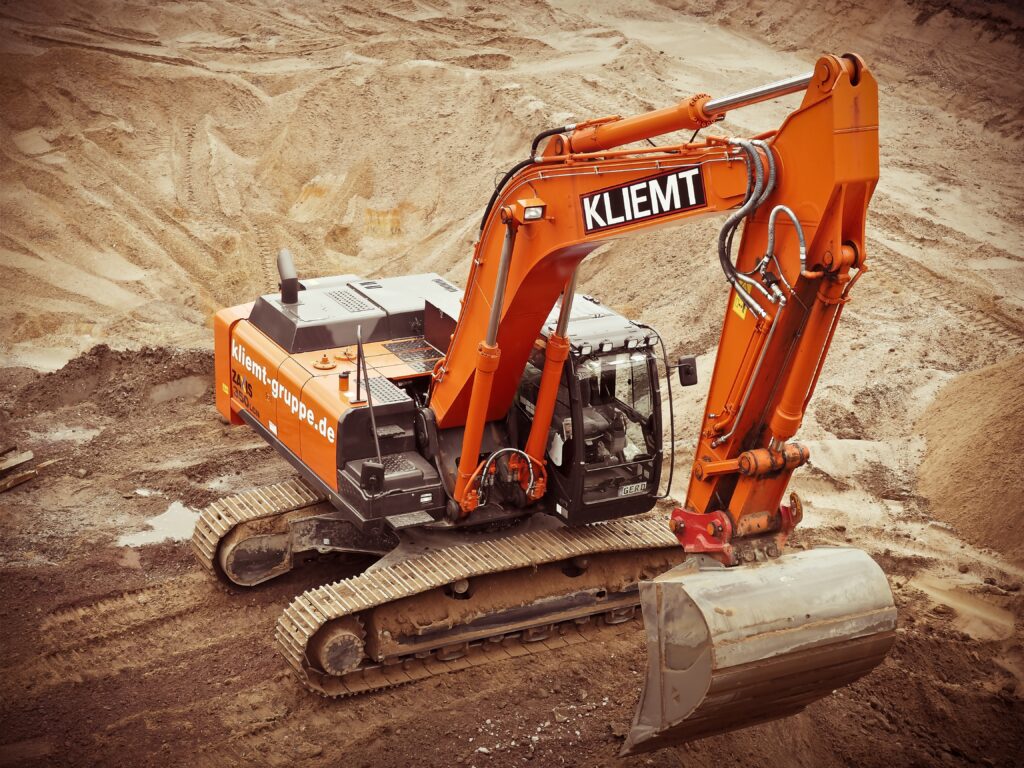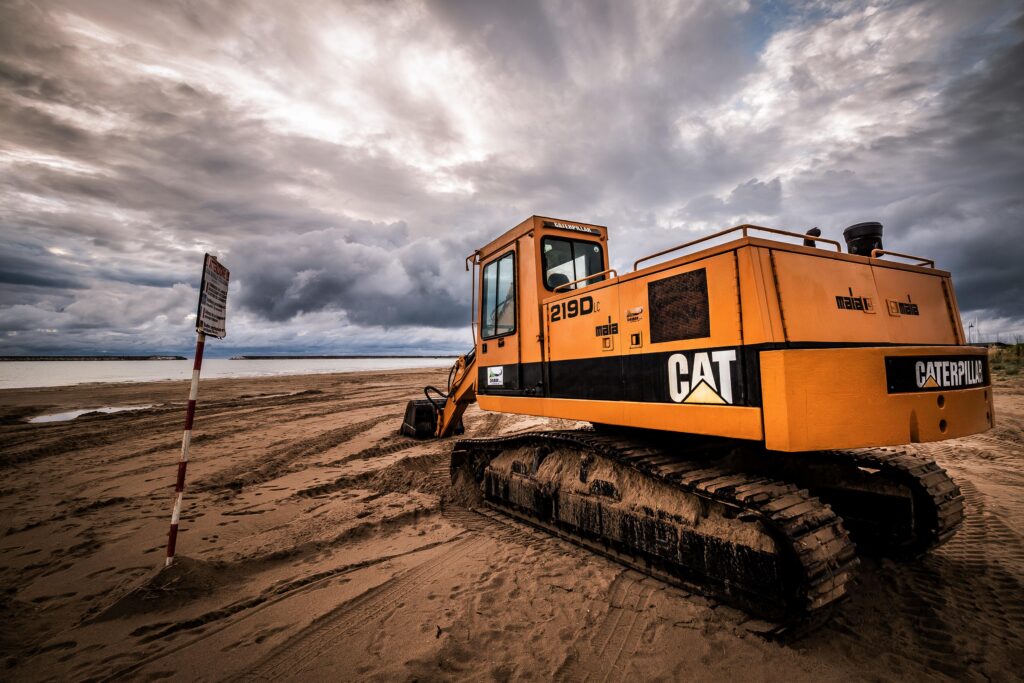Excavators stand as stalwart giants in the construction and mining sectors, tirelessly moving earth and debris to facilitate large-scale projects. While components like engines, hydraulics, and tracks often garner attention, there exists a critical yet overlooked component that ensures these machines operate smoothly: the excavator fan.
In the realm of heavy machinery, the excavator fan quietly but effectively ensures that operations run smoothly by regulating crucial temperatures within the engine compartment. While its role may seem secondary compared to the power of the engine or the precision of hydraulic systems, the fan is instrumental in maintaining optimal operating conditions for the heart of the excavator—the engine.

Excavator fans are crafted from robust materials designed to withstand harsh operational environments:
1.Plastic: Utilizing high-performance engineering plastics such as nylon and polycarbonate for their strength, heat resistance, and lightweight properties. Excavator fans are crafted from resilient materials such as these, which boast exceptional strength and heat resistance. These materials are chosen not only for their durability but also for their ability to withstand the demanding conditions under which excavators operate—extreme temperatures, abrasive dust, and occasional impacts from debris. This ensures that the fan remains robust and reliable throughout its service life, contributing to the overall efficiency and longevity of the excavator.
2.Metal: Fans may be composed of aluminum, prized for its corrosion resistance and lightweight nature, or steel, offering superior durability and strength under extreme conditions. Aluminum fans are favored in excavators for their ability to resist corrosion, which is particularly advantageous in environments where moisture and chemicals are prevalent. Moreover, aluminum’s lightweight properties contribute to the overall efficiency of the excavator, reducing the load on other components and enhancing fuel efficiency.On the other hand, steel fans are chosen for their unmatched strength and durability, especially in applications where the fan is subjected to high stress and impact. Steel’s resilience makes it ideal for withstanding the rigors of heavy-duty operations, such as mining and construction sites where the fan may encounter abrasive materials and occasional impacts from debris. Despite being heavier than aluminum, steel fans provide robust performance and longevity, ensuring reliable operation over extended periods.
In both cases, whether aluminum or steel, the choice of metal for excavator fans depends on the specific requirements of the machine and the operating environment. Manufacturers carefully select materials to optimize performance, durability, and operational efficiency, thereby supporting the reliable functioning of excavators in challenging conditions.
3.Composite Materials: Some fans blend plastics with reinforcing fibers like glass or carbon, enhancing strength and durability while maintaining a lightweight structure. These composite materials strike a balance between strength and weight, making them ideal for high-stress applications where both performance and efficiency are crucial. The incorporation of glass or carbon fibers into plastics significantly improves the fan’s ability to withstand impacts and resist deformation under extreme conditions. This advanced composite construction not only extends the fan’s operational lifespan but also enhances overall reliability in demanding construction and mining environments.Each material type offers distinct benefits tailored to varying operational demands and environmental challenges.
The primary function of the excavator fan is to regulate engine temperature by dissipating heat:
1.Temperature Regulation: Temperature regulation plays a crucial role in the operation of excavators. Ensuring the engine operates within optimal temperature ranges is not only to prevent overheating but also directly impacts the overall performance and reliability of the machine.
2.Enhanced Performance: Efficient cooling not only sustains optimal engine performance but also reduces fuel consumption, thereby improving overall efficiency.
3.Prolonged Engine Life: By maintaining stable temperatures, the fan mitigates wear on engine components, contributing significantly to long-term durability and reliability.
Proper maintenance is essential to uphold fan performance and longevity:
1.Regular Cleaning: Removing dirt, dust, and debris prevents airflow obstruction, optimizing cooling efficiency. Recommended methods include using compressed air or a soft brush.
2.Inspection Practices: Regularly inspect fan blades for cracks, chips, or deformities, addressing issues promptly to maintain optimal performance.
3.Belt Tension and Bearing Lubrication: Ensure proper belt tension to prevent slippage, coupled with regular lubrication of bearings to minimize friction and extend operational lifespan.
Excavator fans are susceptible to various forms of damage:
1.Impact Damage: Impact from rocks or debris can lead to cracked or broken fan blades, necessitating thorough post-operation inspections.
2.Wear and Tear: Continuous operation in rugged environments accelerates wear on fan components, necessitating proactive maintenance.
3.Corrosion: Exposure to moisture and chemicals can corrode metal fans, compromising structural integrity. Applying anti-corrosion coatings helps mitigate this risk.
4.Belt Failures: Signs of belt wear such as fraying or cracking require timely replacements to ensure consistent fan operation and prevent overheating.
Recognizing early indicators of fan failure is crucial:
1.Audible Indicators: Unusual noises like squealing or grinding often signal bearing failure or damaged blades, warranting immediate attention.
2.Performance Indicators: Performance indicators such as fluctuations in engine temperature or reduced cooling efficiency serve as critical signals that can indicate potential fan malfunction, significantly affecting the performance and reliability of excavators.
When an excavator’s engine temperature fluctuates unexpectedly, it can lead to inefficiencies in operation. Engine components may not receive adequate cooling, which can compromise their functionality and lifespan. This fluctuation often points to issues within the cooling system, including the fan’s ability to regulate airflow effectively. For instance, if the fan fails to operate at optimal speeds or if there are obstructions hindering airflow, the engine may overheat, leading to potential damage and costly repairs.
Reduced cooling efficiency is another clear indicator of potential fan malfunction. If the excavator’s cooling system fails to maintain consistent cooling under normal operating conditions, it can lead to overheating episodes. This not only impacts immediate performance by reducing engine power and efficiency but also poses long-term risks to the engine’s durability. Overheating can accelerate wear on critical components, leading to premature failure and downtime, which can disrupt construction schedules and increase operational costs.
Addressing these performance indicators promptly is crucial for maintaining excavator reliability. Regular inspections of the fan system, including fan blades, motor operation, and airflow paths, can help detect potential issues early on. Routine maintenance, such as cleaning debris from fan blades and ensuring proper lubrication of fan bearings, is essential to prevent malfunctions that could compromise cooling efficiency.
In conclusion, monitoring performance indicators such as engine temperature fluctuations and cooling efficiency provides valuable insights into the health of the excavator’s fan system. Proactively addressing any issues ensures that the fan operates optimally, supporting consistent performance, reliability, and longevity of the excavator in demanding construction and mining environments.
3.Visual Inspection Cues: Visual inspection cues, such as visible damage such as cracks on blades or hub deformation, are crucial indicators that require immediate attention to prevent further operational issues in excavators.
When cracks appear on fan blades, whether due to impacts from debris or stress fractures over time, they compromise the structural integrity of the fan. These cracks can propagate under continued operation, potentially leading to blade failure. If not addressed promptly, a cracked blade can break off completely, causing imbalance in the fan assembly. This imbalance not only affects the fan’s efficiency in cooling the engine but also poses risks of further damage to surrounding components.
Similarly, hub deformation, where the central part of the fan that connects to the motor or shaft shows signs of bending or warping, indicates significant stress or impact. Hub deformation can impair the fan’s ability to rotate smoothly, affecting airflow and cooling efficiency. It may also indicate underlying issues with the fan’s mounting or alignment, which if left unchecked, can lead to more severe mechanical failures.
Prompt actions in response to these visual cues are essential to mitigate potential risks and maintain excavator reliability. Immediate steps may include replacing damaged blades or repairing hub deformations to restore the fan’s proper function. Regular visual inspections as part of maintenance routines are crucial to identify such issues early on, before they escalate into larger problems that could result in costly repairs and downtime.
Furthermore, addressing visual cues promptly not only ensures the continued operational efficiency of the excavator but also contributes to overall safety on construction and mining sites. A well-maintained fan system reduces the likelihood of unexpected failures that could compromise worker safety and project timelines.
In conclusion, visual inspection cues such as cracks on blades or hub deformation serve as early warnings of potential fan issues in excavators. Taking immediate corrective actions not only prevents further operational disruptions but also enhances the reliability and longevity of the excavator in demanding operational environments.

Knowing when to replace the excavator fan is critical to minimizing downtime and avoiding costly repairs. Several key criteria dictate when replacement is necessary:
1.Persistent Overheating: Despite regular maintenance and cleaning, if the excavator continues to experience overheating issues, it may indicate that the fan is not effectively cooling the engine. Overheating can lead to serious engine damage if not addressed promptly. Replacing the fan can restore proper cooling and prevent further damage.
2.Extensive Damage: Physical damage to the fan, such as cracks, breaks, or severe wear on blades, can impair its performance significantly. This damage may occur due to impacts from debris or prolonged exposure to harsh operating conditions. Such conditions compromise the fan’s ability to maintain adequate airflow, necessitating replacement to ensure efficient engine cooling.
3.Diminished Cooling Efficiency: Over time, wear and tear can reduce the efficiency of the fan. Factors like accumulation of dirt, dust, or corrosion can impede airflow and diminish cooling capacity. A noticeable decline in cooling efficiency, evidenced by increased engine temperatures or slower response to cooling demands, signals the need for fan replacement to restore optimal performance.
4.Reaching Operational Lifespan: Like any mechanical component, excavator fans have a finite operational lifespan. Manufacturers specify recommended service intervals or operational hours after which replacement is advised. Continuing to operate a fan beyond its recommended lifespan increases the risk of unexpected failures, which can lead to extended downtime and higher repair costs.
Proactive Replacement is key to minimizing disruptions in excavator operations and preventing potential engine damage. By replacing the fan before it reaches a critical failure point, operators can ensure uninterrupted performance and extend the overall longevity of the equipment. This proactive approach aligns with preventive maintenance strategies aimed at optimizing equipment reliability and minimizing life cycle costs.
Regular inspections and monitoring of the fan’s condition are essential preventive measures. This includes visual inspections for signs of wear or damage, checking for abnormal noises during operation, and assessing cooling efficiency through temperature monitoring. Implementing a proactive replacement schedule based on these observations helps maintain peak performance and reliability of the excavator in demanding construction and mining environments.
In conclusion, adherence to replacement guidelines based on performance indicators and operational lifespan ensures that excavator fans operate at peak efficiency, minimizing downtime, reducing repair costs, and safeguarding engine integrity.
When considering YEM for excavator fan solutions, several compelling reasons make them a preferred choice in the industry:
1.Quality Assurance: YEM specializes in providing OEM (Original Equipment Manufacturer) parts, ensuring each fan offers a perfect fit and compatibility with specific excavator models. Their commitment to quality is reinforced through rigorous inspection and refurbishment processes, guaranteeing that every fan meets or exceeds industry standards. This reliability ensures optimal performance and longevity, crucial for maintaining excavator efficiency in demanding operational environments.
2.Wide Selection: YEM maintains a comprehensive inventory that caters to a diverse range of excavator models and configurations. This extensive selection ensures that operators can easily find the right fan tailored to their specific operational requirements. Whether for small-scale construction projects or large-scale mining operations, YEM inventory availability ensures prompt sourcing and delivery of critical components.
3.Expert Support: YEM distinguishes itself through knowledgeable support staff who are dedicated to assisting customers in every aspect of fan selection and installation. Their expertise helps operators make informed decisions, ensuring that chosen fans are not only compatible but also optimized for enhancing equipment efficiency and longevity. From initial consultation to ongoing technical support, YEM’s team strives to maximize the performance and reliability of excavators through proactive customer service.
In summary, YEM stands out as a reliable partner for excavator fan solutions due to their commitment to quality, cost-effectiveness, wide selection, and expert support. By choosing YEM, operators benefit from assured quality, reduced costs, comprehensive product availability, and dedicated support, all contributing to improved equipment performance and operational efficiency in construction and mining applications.
Conclusion
In conclusion, excavator fans play a pivotal role in maintaining engine health and overall excavator efficiency. Regular maintenance, proactive inspections, and timely replacements are essential practices to ensure optimal performance and prolonged lifespan of these critical components. For reliable excavator fan solutions, YEM stands ready to support your operational needs, ensuring uninterrupted productivity in construction and mining environments. Contact YEM today to discover how our expertise can benefit your equipment fleet.
This comprehensive approach underscores the crucial role of excavator fans in operational efficiency and longevity, ensuring sustained productivity in demanding environments.
